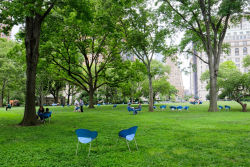The Battery
Jewish Tercentenary Monument
This flagstaff, unveiled on May 20, 1955, commemorates the 300th anniversary of the arrival of the first Jewish settlers in New Amsterdam and North America.
In September 1654, Asser Levy and a group of 23 Sephardic Jews fled Recife, Brazil, for New Amsterdam to seek refuge from the Inquisition. Shortly after their arrival, Director General of New Netherland Peter Stuyvesant (1610-1672) attempted to evict them. However, Levy challenged Stuyvesant on such issues as citizenship, the right to bear arms, and property ownership. Levy prevailed, and became the first Jewish citizen of New Amsterdam and a leading advocate for the civil rights of Jews.
Levy was the first kosher butcher in the new colony, the first Jew to serve on guard duty (“watch and wait”) and to own property, and a founding member of Shearith Israel, the first Jewish congregation in North America. Today Shearith Israel's synagogue is located at Central Park West and 70th Street. Its congregational burial grounds are at 55 St. James Place (1683-1828), 72-76 West 11th Street (1805-1829), 98-110 West 21st Street (1829-1851), and Cypress Hills Street, Queens (1885-present).
This monument, which includes a 75-foot-high flagpole, a 7-foot-high granite pedestal, and a decorative bronze tablet, was erected under the auspices of the New York Joint Legislative Committee for the American Jewish Tercentenary. Though the precise landing point of the first Jewish settlers cannot be confirmed, it is believed to have been nearby, in what today is lower Manhattan.
At the dedication ceremony, Governor Averell Harriman (1891-1986) presented the flagpole and plaque to Parks Commissioner Robert Moses (1888-1981), representing the City of New York. Dr. Julius Mark, Chairman of the Tercentenary Committee of the New York Board of Rabbis, delivered the invocation, and the Department of Sanitation band provided music. The event was broadcast over New York City’s Municipal Broadcasting System.
The large bronze tablet, with an inscription honoring the intrepid band of Jewish immigrants, was fashioned by the sculptor Abram Belskie (1907-1988). On it, two stylized lions frame a Star of David set over a decorative low-relief menorah.
Abram Belskie was born in London, England, on March 24, 1907, and studied at the Glasgow School of Art, where he later became an instructor. Belskie moved to the United States in 1929, and collaborated on the panels that adorn the Folger Shakespeare Library in Washington, D.C. In 1930, he moved with his wife, Helen, to Closter, New Jersey, where he lived and worked for the next 58 years. Two of his best-known sculptures are Christ Child and Moon Beam, both now at Brookgreen Gardens in South Carolina.
Belskie was also affiliated with the New York Academy of Medicine, for which he made anatomical models. Several of his life-size models were displayed at the Hall of Man at the 1939 New York World’s Fair. Belskie executed projects for the American Heart Association and other medical organizations as well. The Franklin Mint, the Negro Commemorative Society, Presidential Art Medals, and the American Numismatic Society all commissioned medals and medallions from him. Upon his death in 1988, the Lions Club of Closter created the Belskie Museum of Art and Science in his honor.
The Jewish Tercentenary Monument is set within a small landscaped triangle named for Peter Minuit (1580-1638), the Dutch provincial director general who is credited with the purchase of Manhattan Island from the Lenape people. The park is presently undergoing an expansion and improvement, under the auspices of the Economic Development Corporation, as part of the construction of the new Whitehall Ferry Terminal.
Check out your park's Vital Signs
Clean & Safe
Green & Resilient
Empowered & Engaged Users
Share your feedback or learn more about how this park is part of a
Vital Park System

Know Before You Go











